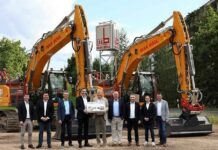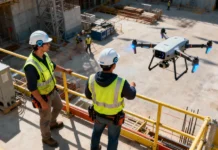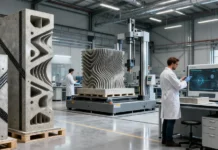Prefabricated and Modular Systems Redefining Construction Efficiency
The construction industry faces a paradoxical challenge. Global demand for infrastructure—housing, healthcare, education, transportation, utilities—continues escalating as urbanization accelerates, populations grow, and living standards improve. Simultaneously, the construction labor pool faces unprecedented constraints. Younger generations pursue alternative careers. Immigration restrictions limit labor availability. Wage pressures intensify as demand for skilled workers exceeds supply. Traditional construction methods increasingly prove unable to satisfy demand within acceptable timelines and cost parameters.
Enter modular systems and prefabricated construction—methodologies fundamentally reimagining construction delivery to address labor constraints while dramatically improving efficiency. Rather than assembling buildings piece-by-piece on-site through labor-intensive processes requiring coordinating diverse trades in confined spaces, modular design and prefabricated systems relocate production to factory environments where automation, standardization, and controlled conditions enable extraordinary productivity improvements.
This transformation extends far beyond labor efficiency. Prefabricated construction and modular systems simultaneously achieve improved quality, reduced costs, accelerated timelines, enhanced sustainability, and superior safety performance. Projects leveraging these methodologies demonstrate that construction innovation through modular design isn’t merely an alternative approach—it represents the future mainstream direction of construction industry evolution.
The Productivity Crisis Driving Transformation
Construction productivity—output per labor hour—has stagnated or declined across most developed economies over decades. While productivity in manufacturing, agriculture, and services sectors increases consistently through technological innovation and process improvement, construction productivity improvements remain negligible. A worker performing construction tasks in 2024 achieves productivity levels not substantially exceeding workers from decades past.
This stagnation occurs despite enormous technological advancement. Digital tools, advanced equipment, improved materials—all exist. Yet productivity improvements fail to materialize systematically. One primary reason: construction’s inherently site-dependent nature resists the standardization and efficiency practices transforming other industries.
Prefabricated construction and modular systems overcome this site-dependency by relocating production to factory environments capable of standardization, optimization, and efficiency discipline difficult to achieve on construction sites.
Site Constraints Limiting Efficiency
Construction sites present inherent constraints limiting productivity. Weather creates variability—rain halts many activities, heat stress reduces productivity, extreme cold creates danger. Space constraints in urban environments or confined jobsites require workers to operate in cramped conditions reducing efficiency. Site congestion with multiple trades operating in close proximity creates coordination challenges and safety risks.
Equipment deployment becomes inefficient at small scales. Large, sophisticated equipment deployed for brief periods at multiple projects proves economically wasteful. Site logistics and material handling consume disproportionate effort. Worker motivation suffers when working in difficult outdoor environments under uncertain conditions.
Factory Environment Advantages
Factories eliminate these site constraints. Climate-controlled environments operate independent of weather. Optimal space layouts position workers ergonomically. Standardized processes reduce decision-making and coordination complexity. Large-scale equipment deployment is economically justified through continuous operation. Logistics efficiency improves through centralized material flow.
When these factors combine, factory operations achieve productivity exceeding site operations by 100 to 200 percent for comparable tasks. A component manufacturer can produce units in factories at costs and timelines 40 to 60 percent lower than equivalent on-site production, even accounting for transportation costs.
The Comprehensive Efficiency Transformation
Prefabricated systems and modular construction improve efficiency through multiple reinforcing mechanisms extending far beyond direct labor productivity gains.
Direct Labor Cost Reduction
Modular systems reduce on-site labor requirements by 50 to 80 percent compared to conventional construction for comparable projects. This dramatic labor reduction emerges from multiple sources. Factory production concentrates labor requirements to specialized locations rather than dispersing throughout projects. Standardized components reduce decision-making and rework. Assembly simplicity reduces training requirements. Weather-independent factory operations maintain productivity independent of conditions affecting site operations.
For a typical residential project, conventional construction might require 100 workers over 18 months. Modular construction for equivalent housing might require 30 to 40 site workers over 12 months, with the majority of production labor concentrated at factories. The reduced on-site labor requirement dramatically reduces labor costs—both direct wages and associated overhead for supervision, administration, and logistics.
Rework Minimization Through Quality Control
Quality control processes in factories detect and correct defects before components leave production facilities. On-site construction discovers defects after integration into projects, requiring expensive corrections. A structural error in a prefabricated component discovered before shipment corrects through remanufacturing. The same error discovered after on-site installation might require removal of completed work, correction, and reinstallation at extraordinary cost.
This quality advantage—enabled by factory precision manufacturing and controlled conditions—translates directly into cost reduction through rework elimination. Research indicates that rework typically consumes 5 to 15 percent of construction costs in conventional projects. Reducing rework by 80 percent through prefabricated construction quality advantages delivers savings exceeding 4 to 12 percent of total project costs.
Supply Chain Optimization
Prefabricated systems enable sophisticated supply chain management impossible in conventional construction. Standardized components enable bulk purchasing of raw materials at volume discounts. Production schedules enable just-in-time material procurement minimizing inventory costs. Long-lead items can be procured months in advance, manufactured into components, and staged for delivery exactly when required.
These supply chain improvements reduce materials costs 10 to 20 percent below comparable conventional projects. For large projects, these material savings prove substantial.
Transportation and Logistics Efficiency
While transportation of prefabricated modules might seem less efficient than on-site material delivery, comprehensive analysis often reveals advantages. Consolidated shipments of completed modules prove more efficient than dispersed delivery of thousands of individual materials. Return transportation becomes unnecessary—waste remains at factories for centralized management rather than accumulating on jobsites. Logistics management simplifies dramatically with fewer, larger shipments rather than constant material deliveries.
Construction Innovation Through Modular Design
Modular design represents a specific methodology enabling prefabricated construction efficiency through deliberate attention to component boundaries and standardization.
Component Standardization Benefits
Rather than creating unique designs for each project, modular design emphasizes standardized components manufactured in volume. A standardized modular unit might be incorporated into dozens or hundreds of projects. This volume enables amortization of tooling and setup costs across many units, reducing per-unit manufacturing costs dramatically.
Standardization enables process optimization. When manufacturing processes consistently produce identical or highly similar components, process refinement becomes increasingly valuable. Each iteration improves efficiency. Quality control processes become more sophisticated. Worker expertise develops through repetition. These continuous improvements translate into escalating efficiency.
A manufacturer producing thousands of identical modular units annually achieves efficiency and quality superior to a factory producing dozens of unique designs. This standardization advantage fundamentally advantages modular systems over unique designs.
Design for Manufacturing Principles
Modular design explicitly considers manufacturing constraints and opportunities during design phases, rather than treating manufacturing as an afterthought. Designs optimized for factory production differ from designs optimized for on-site assembly or minimal manufacturing requirements.
Design for manufacturing principles include simplification—reducing component complexity reduces manufacturing difficulty. Standardization—using identical components repeatedly rather than unique variations reduces manufacturing diversity. Assembly-friendliness—designing components for simplified assembly reduces assembly complexity and errors. Material efficiency—optimizing material usage reduces waste and material costs.
When designers understand manufacturing capabilities and constraints, they create designs simultaneously optimizing performance and manufacturability. These collaborative approaches achieve better outcomes than designs developed without manufacturing consideration.
Adaptive Designs and Customization Within Standardization
A common misconception suggests that modular systems eliminate customization possibilities. In reality, sophisticated modular design enables extensive customization within standardized frameworks. Standardized structural modules might incorporate custom finishes, diverse layouts, or different mechanical systems accommodating project-specific requirements.
This approach captures standardization efficiency benefits while enabling customization satisfying diverse project requirements. Rather than completely unique designs for each project, designs incorporate standardized core components with project-specific variations. This hybrid approach balances efficiency and flexibility effectively.
Sustainable Building Through Modular Approaches
Environmental considerations increasingly influence construction decisions. Prefabricated construction and modular systems deliver multiple sustainability benefits.
Waste Reduction and Material Efficiency
Factory production generates substantially less waste than conventional on-site construction. Precision manufacturing minimizes cutting waste. Standardized components utilize materials optimally. Offcuts from one component become materials for subsequent components. Factory waste management systems recover materials for recycling rather than allowing waste to accumulate on jobsites destined for landfills.
Research indicates that prefabricated construction generates 30 to 50 percent less waste than conventional construction. For large projects, this waste reduction substantially decreases environmental impact and landfill contributions.
Embodied Carbon Reduction
Building material production generates substantial carbon emissions—concrete production alone generates approximately 8 percent of global carbon dioxide emissions. Prefabricated systems reduce embodied carbon through multiple mechanisms.
Reduced construction duration means fewer worker commutes to jobsites. Concentrated factory production enables superior energy efficiency—single, optimized facility proves more efficient than dispersed projects. Waste reduction means less material extraction and processing. Reduced rework eliminates carbon emissions from materials requiring correction and reinstallation.
Research indicates that modular and prefabricated construction achieves embodied carbon reductions of 40 to 60 percent compared to conventional construction.
Operational Energy Efficiency
Prefabricated systems enable pre-assembly of building systems—insulation, air sealing, mechanical systems, lighting—in factory conditions with quality assurance impossible on-site. When components arrive at sites, they have already been tested for performance and integrated optimally. Installation occurs in simplified assembly rather than requiring on-site fabrication and integration.
Buildings constructed from factory-assembled components frequently achieve superior thermal performance compared to comparable conventional buildings. Consistent insulation application, reliable air sealing, and integrated mechanical systems all contribute to enhanced efficiency. These operational energy improvements generate environmental benefits accumulating over decades of building occupation.
Application Across Diverse Project Types
Modular and prefabricated construction successfully addresses diverse application categories.
Residential Housing Development
Housing shortages and affordability crises create compelling applications for modular construction. Housing units manufactured off-site arrive at projects ready for assembly, enabling dramatically accelerated delivery compared to conventional construction. Unit costs decrease through manufacturing standardization and volume production.
UK government housing programs increasingly specify modular approaches to meet ambitious housing delivery targets efficiently. Indian housing initiatives similarly leverage modular methodologies to expand affordable housing availability. Modular residential projects worldwide demonstrate ability to deliver housing simultaneously achieving quality, affordability, and timely delivery—outcomes conventional construction struggles to achieve simultaneously.
Healthcare Infrastructure
Hospitals and healthcare facilities present complex challenges requiring rapid, reliable construction. Modular systems enable prefabrication of patient rooms, diagnostic facilities, surgical suites, and support spaces maintaining strict infection control and regulatory compliance.
Modular ICU facilities enable rapid capacity expansion during emergencies. Temporary modular healthcare facilities provide essential services in disaster situations when conventional construction proves impossible. Permanent healthcare facilities incorporate modular components accelerating construction while maintaining quality and regulatory compliance.
Educational Facilities
School and university expansions often require accelerated timelines—expanded capacity must be available at beginning of academic periods rather than mid-year. Modular construction enables school buildings manufactured off-site arriving ready for assembly before academic years commence.
Permanent modular classrooms achieve standardization enabling cost-effective volume production. Flexibility enables reconfiguration as educational requirements evolve. Quality manufacturing ensures compliance with educational facility requirements—natural lighting, acoustical performance, environmental control—sometimes difficult to achieve through conventional construction.
Commercial and Industrial Applications
Data centers, manufacturing facilities, distribution centers, and office buildings utilize modular construction for rapid deployment and configuration flexibility. E-commerce facilities require rapid expansion—modular construction enables deployment timelines impossible through conventional methods.
Industrial facilities benefit from modular mechanical and electrical systems enabling complex functionality within standardized frameworks. Office buildings incorporate modular components enabling reconfiguration as tenant requirements evolve.
Regulatory Evolution Supporting Adoption
Building codes and regulatory frameworks have traditionally resisted novel construction methodologies, creating barriers to adoption. This situation is evolving as regulatory bodies recognize that modular and prefabricated construction satisfies building code performance requirements while delivering superior efficiency.
Modern building codes increasingly enable performance-based compliance—demonstrating that specific methodologies achieve required performance rather than adhering to prescriptive requirements. This performance-based approach enables modular systems demonstrating code compliance through testing and documentation rather than requiring adherence to prescriptive details.
Permanent modular construction now receives recognition equivalent to conventional construction in building codes across most jurisdictions. This regulatory acceptance removes a significant adoption barrier enabling broader implementation.
Implementation Considerations and Success Factors
Organizations considering modular and prefabricated construction should address strategic considerations enabling successful implementation.
Design Phase Optimization
Early design investment substantially influences downstream efficiency. Modular boundaries should be established early enabling manufacturing process optimization. Component standardization should be emphasized enabling volume production benefits. Design detailing should accommodate factory manufacturing while satisfying performance requirements.
Projects featuring poor design coordination incur manufacturing complications, on-site assembly difficulties, and integration issues. Conversely, projects incorporating thoughtful modular design experience manufacturing efficiency, assembly simplicity, and performance optimization.
Manufacturing Capability Assessment
Organizations lacking internal manufacturing capability should evaluate partnerships with established modular manufacturers. Attempting to establish manufacturing facilities without sufficient volume commitment frequently proves economically unviable. Conversely, partnerships with established manufacturers having proven processes, quality systems, and efficiency practices enable rapid implementation capturing established benefits.
Supply Chain Development
Successful modular and prefabricated construction requires supply chain infrastructure—material suppliers, component manufacturers, logistics providers, and assembly specialists—capable of supporting modular delivery. Where mature supply chains exist, implementation accelerates readily. Where supply chains require development, organizations should plan accordingly recognizing that supply chain development precedes major program implementation.
Stakeholder Communication and Change Management
Success requires educating stakeholders about modular systems benefits and addressing concerns regarding performance, durability, and aesthetic outcomes. Transparent communication demonstrating project examples, providing quality documentation, and managing change resistance facilitates acceptance.
Future Evolution and Emerging Opportunities
Modular and prefabricated construction continues evolving through technological advancement and expanding applications.
Robotics and automation increasingly automate manufacturing processes, enabling further productivity improvements. Artificial intelligence optimization of manufacturing sequences and quality control enhances manufacturing efficiency. Three-dimensional printing of modular components enables geometric optimization previously impossible. Integration with renewable energy systems enables modular components incorporating solar generation or other distributed energy sources.
These emerging directions promise continued evolution enabling even greater efficiency improvements and sustainability benefits.
Conclusion: The Inevitable Transformation
Modular systems and prefabricated construction represent the future mainstream direction of construction industry development. Market growth projections to $228.9 billion by 2030 underscore the transformative nature of this evolution. The combination of labor productivity improvements, cost reductions, quality enhancements, timeline acceleration, and sustainability benefits creates compelling rationale for broad adoption.
For organizations confronting labor constraints, cost pressures, schedule challenges, and sustainability requirements, modular and prefabricated construction offers proven solutions. The evidence from successful projects worldwide—from residential development to healthcare facilities to industrial applications—demonstrates that these methodologies deliver promised benefits reliably across diverse contexts and geographies.
The construction industry evolution toward modular and prefabricated systems will fundamentally reshape how infrastructure develops over coming decades. Organizations embracing this transformation position themselves advantageously to compete effectively in an evolving marketplace, while organizations remaining committed exclusively to conventional approaches risk obsolescence as market forces accelerate the transition. The future of construction is distinctly modular, and that future is arriving now.
































